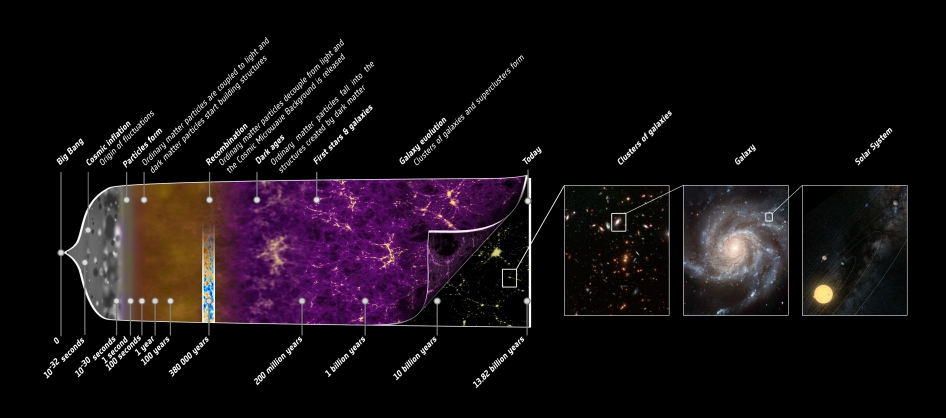
About the section
The section for Cosmology and Extragalactic Astronomy emphasizes the interplay between analysis of data from experiments, numerical simulations and fundamental theory to understand the Universe. We are pursuing questions like:
- What is the origin of our Universe?
- How has the universe evolved, and how will it evolve in the future?
- What are the contents of the Universe?
- How did galaxies form and evolve?
- How was the Universe reionized?
- What is the nature of dark energy and dark matter, and do these things really exist?
- What are the physical laws governing the evolution of the Universe?
Over the last few decades, new observations have greatly improved our knowledge of the cosmos, and a standard model of the Universe has emerged. Still, there are lots of fundamental questions yet to be answered, or even posed. Further advances will rely on both new observations, simulations and theoretical work.
Projects and cooperation
The section presently does research in several, closely interacting, directions. In each of these directions, we aim to connect fundamental theory with cutting-edge experiments and observations. Due to the complexity of the topics, this involves in most cases detailed numerical simulations and a strong emphasis on high-performance computing.
1. The Cosmic Microwave Background (CMB)

The main scientific motivation for the first research direction is to understand the physics of the Big Bang. How was the Universe created? Which physical laws acted in the moment of creation? According to the current standard model of cosmology, a quantum mechanical process called inflation took place immediately after the Big Bang, during which the scale of the Universe expanded from the size of an atom to the size of a Galaxy, in a fraction of a second. During this violent period, space itself was twisted and warped, and a loud background of gravitational waves were excited. Today, we are looking for these gravitational waves in the polarization of the Cosmic Microwave Background (CMB) with a wide range of previous, current and future experiments, including CORE, GreenPol, LiteBIRD, PASIPHAE, Planck, QUIET, SPIDER and many more.
2. Fundamental theoretical cosmological research

X-ray: NASA/CXC/CfA/M.Markevitch et al.; Optical: NASA/STScI; Magellan/U.Arizona/D.Clowe et al.; Lensing Map: NASA/STScI; ESO WFI; Magellan/U.Arizona/D.Clowe et al.
The second research direction covers studies of dark energy, dark matter, and cosmological neutrinos. One of the key projects in this field during the coming decade will be Euclid, ESAs massive galaxy survey satellite mission. Measuring the positions of billions of galaxies with unprecedented accuracy, this experiment will allow us to constrain the expansion history of the universe to sub-percent precision, and thereby potentially unveil the physical nature of dark energy. The same measurements will also open up a new window on dark matter and galaxy formation, and it will allow us to constrain modified theories of gravity, and just perhaps prove Einstein wrong.
3. Galaxy formation and reionization

Finally, the goal of the third research direction is to understand in detail how galaxies and stars formed. When did the first stars ignite? How was the Universe reionized? The rate of progress toward understanding these questions during the last few years has been astounding, resulting in a highly complex picture that depends critically on the interplay between large-scale dark matter gravitational interactions and small-scale baryonic physics and feedback processes. To make progress in this field, connecting detailed numerical simulations with state-of-the-art observations from experiments such as COMAP, Euclid and NOT is absolutely critical, and making this connection forms a primary focus in our work.